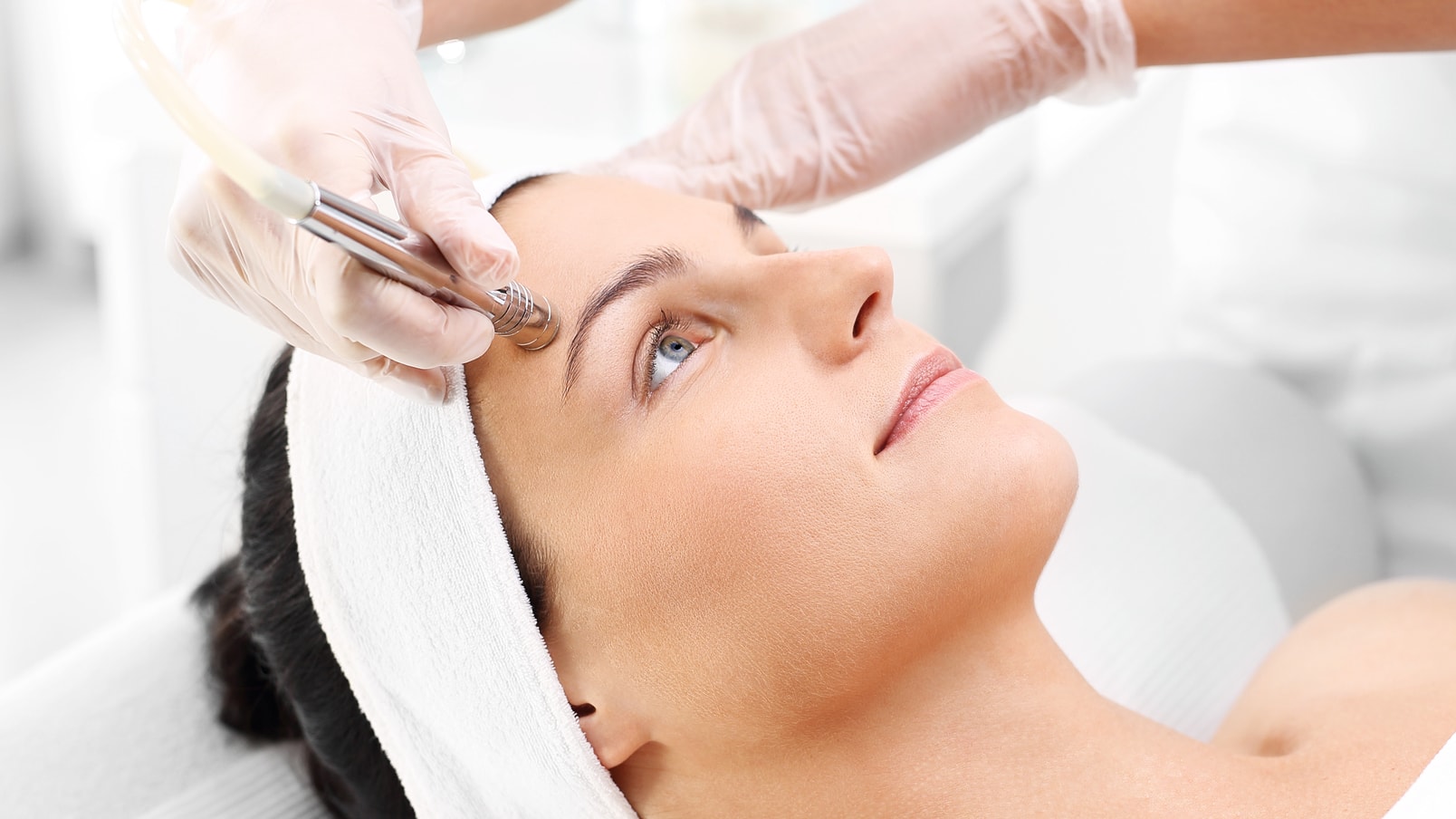
Chemabrasion is a skin resurfacing procedure that combines a medium depth chemical peel with a light to medium dermabrasion in order to improve skin imperfections. It is a controlled depth injury that aggressively stimulates the formation of new collagen and elastin.
The chemabrasion treats many things with one procedure: it will remove fine lines/ wrinkles, acne scarring, sun damage, irregular pigmentation, pre-cancerous lesions (like actinic keratosis), and even some types of early skin cancer. Even deep wrinkles improve by 75- 85% and acne scars/deep broad-based pits get 50+% better after one treatment. The overall skin healing response results in a noticeable degree of skin tightening as the tissues heal and this process continues for up to a year - in fact the patient's skin will probably be thicker, smoother, less fragile, and more youthful in appearance as time passes. In the past, aggressive laser resurfacing, deep chemical peels, or deep dermabrasion were often used to treat these problems. The "downside" was an artificial, "waxy" appearance after the laser treatment or permanent whitening of the skin after some types of aggressive peels or dermabrasion. Neither of these side effects occur with the chemabrasion. The chemabrasion is the best of both worlds - a safer depth peel to stimulate new collagen and elastin production plus a "lighter" dermabrasion (not microdermabrasion) to smooth the skin surface more efficiently than the medium depth peel can do alone. This minimizes the problems seen with "older" procedures.
A chemabrasion can be used to treat photodamaged, aged, wrinkled or scarred, uneven skin, and turn the clock back to the healthy and youthful skin that the patient once enjoyed. The doctor should talk with the patient before the procedure is done and make sure they are aware there is a period of healing that requires daily cleaning (AM and PM) and the application of ointments/creams to prevent the tissues from drying and scabbing as that will slow down the growth of the new skin. Realistic expectations also need to be discussed and as this is an elective procedure the patient should be in good health. Patients with darker skin should be counseled on the possibility of pigmentation changes (at least temporarily) in the post-treatment period.
The chemabrasion is done to make all areas of facial skin smoother, tighter, and younger when healed. But since our faces do not have the same degree of damage everywhere, the "aggressiveness" of treatment does not need to be the same everywhere. Therefore some areas will re-epithelialize in 2 or 3 days while other more aggressively treated areas will take up to a week or 10 days to reach the same point in wound healing. Patients should probably plan to take 5 to 10 days off of work. Once the skin has regrown the top layer it will have a satiny pink appearance that will gradually return to "normal" over several weeks. The pinkness is related to increased blood flow going through the tissues as the wound healing process proceeds and the new collagen and elastin is being produced. This will continue for up to a year so the skin often looks progressively better as healing proceeds.
Short term risks or complications revolve around wound care. Patients will have an injured surface wherever the chemabrasion was done and wound care keeps the area from getting infected. As infection can turn a partial thickness, controlled wound into a full thickness injury that results in scarring it is extremely important that patients are performing proper cleaning afterward. A long term issue is pigment change and this is usually caused by exposure to UV from the sun. Patients must be cautioned to wear sun protection to protect their skin. Too much UV exposure and even the inflammatory process created by the procedure can lead to hyperpigmentation. So patients should be closely followed afterwards to prevent these problems from getting started and to treat them early if they are starting to occur.
Most people do not need a touch-up procedure although some patients with severe acne pits or very deep wrinkles can do a second chemabrasion after a year.
As pigment problems are often in the superficial part of the skin, patients with pigmentation can often be treated with a less aggressive chemical peel, laser resurfacing or bleaching agents and skin care products. But if the problem involves the dermis (such as deep wrinkles or acne scarring) a more aggressive treatment is needed to get good results. Chemabrasion treats pigmentation as well as the deeper issues. The treatment should match the degree of the problem so the doctor should do what is in the best interest of the patient and the patient should have realistic expectations about what the result can be. In the end we want the skin to appear healthy and young no matter what age we are.
Written by Cosmetic Town Editorial Team- MA
Based on exclusive interview with Terry Perkins, MD in Santa Barbara, CA